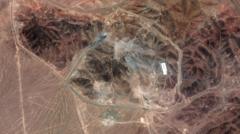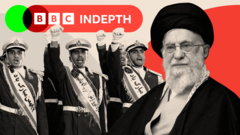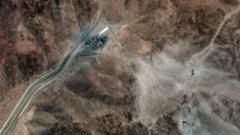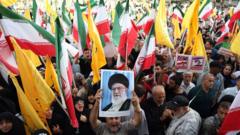Amidst fresh cease-fire developments, the populace in both Israel and Iran grapples with the emotional aftermath of conflict while navigating the fragile peace that has emerged.**
Disquieted Resilience: An Uneasy Return to Normalcy Following the Israel-Iran Cease-Fire**

Disquieted Resilience: An Uneasy Return to Normalcy Following the Israel-Iran Cease-Fire**
As a fragile cease-fire takes hold, everyday life resumes in Israel and Iran amid lingering fears and uncertainties.**
In the wake of a two-day cease-fire following a brief but intense conflict, life in Israel and Iran is beginning to adjust back to a semblance of normalcy, although with underlying fears. Israeli students returned to classrooms that had served dual purposes as bomb shelters, while families in Tehran were nervously heading back home after weeks of panicked evacuations from relentless airstrikes.
In Israel, offices that had been closed due to the military’s orders are reopening, allowing many to resume work after days spent in the shadows of conflict. Meanwhile, in Iran, people grapple with the precarious duality of their situation—relief from active warfare is tempered by concerns over future governmental reprisals.
Maryam, a 35-year-old resident of Bandar Anzali, expressed widespread worries about her family’s future: “Both the war and the cease-fire fill us with dread. The regime may try to assert itself after this tranquility.” The specter of a potential government crackdown looms ominously, leading many Iranians seeking refuge in their hometowns to remain cautious, avoiding the authorities by speaking only on the condition of anonymity.
Tensions remain palpable as citizens from both nations navigate this fragile peace, marked by lingering unease and the shadow of conflict hovering over their attempts to regain normalcy. With the cease-fire in place, the hope for stability is set against the backdrop of trepidation concerning political and social repercussions that might follow.
In Israel, offices that had been closed due to the military’s orders are reopening, allowing many to resume work after days spent in the shadows of conflict. Meanwhile, in Iran, people grapple with the precarious duality of their situation—relief from active warfare is tempered by concerns over future governmental reprisals.
Maryam, a 35-year-old resident of Bandar Anzali, expressed widespread worries about her family’s future: “Both the war and the cease-fire fill us with dread. The regime may try to assert itself after this tranquility.” The specter of a potential government crackdown looms ominously, leading many Iranians seeking refuge in their hometowns to remain cautious, avoiding the authorities by speaking only on the condition of anonymity.
Tensions remain palpable as citizens from both nations navigate this fragile peace, marked by lingering unease and the shadow of conflict hovering over their attempts to regain normalcy. With the cease-fire in place, the hope for stability is set against the backdrop of trepidation concerning political and social repercussions that might follow.























